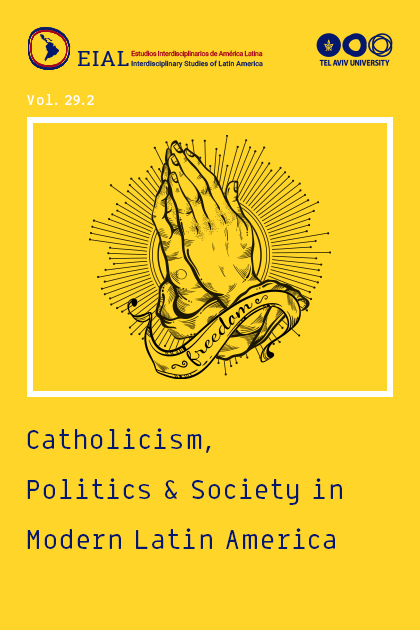Abstract
The distinction drawn by Chevalier between “Anglo” America and “Latin” America would later become part of a vibrant debate among scholars about how exactly the region south of the Río Grande became known as “Latin America.”2While opinions diverge, there is general agreement that Catholicism, and the region’s common Catholic heritage, were an essential part of what enabled contemporaries, including Chevalier himself, to give birth to the idea of “Latin America.” Nevertheless, during that same period the Catholic Church across Latin America was thrown in social, economic, and political turmoil, and was thus paradoxically forced to fight for its place in the continent that it was help-ing to conceptualize.
Copyright © 2012-2013 Estudios Interdisciplinarios de América Latina y el Caribe.
ISSN 0792-7061
Editores: Ori Preuss; Nahuel Ribke
Instituto Sverdlin de Historia y Cultura de América Latina, Escuela de Historia
Universidad de Tel Aviv, Ramat Aviv,
P.O.B. 39040 (69978), Israel.
Correo electrónico: eial@tauex.tau.ac.il
Fax: 972-3-6406931

